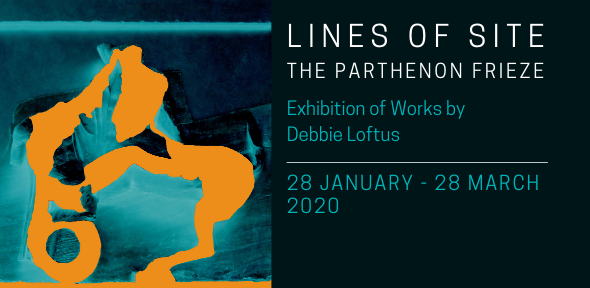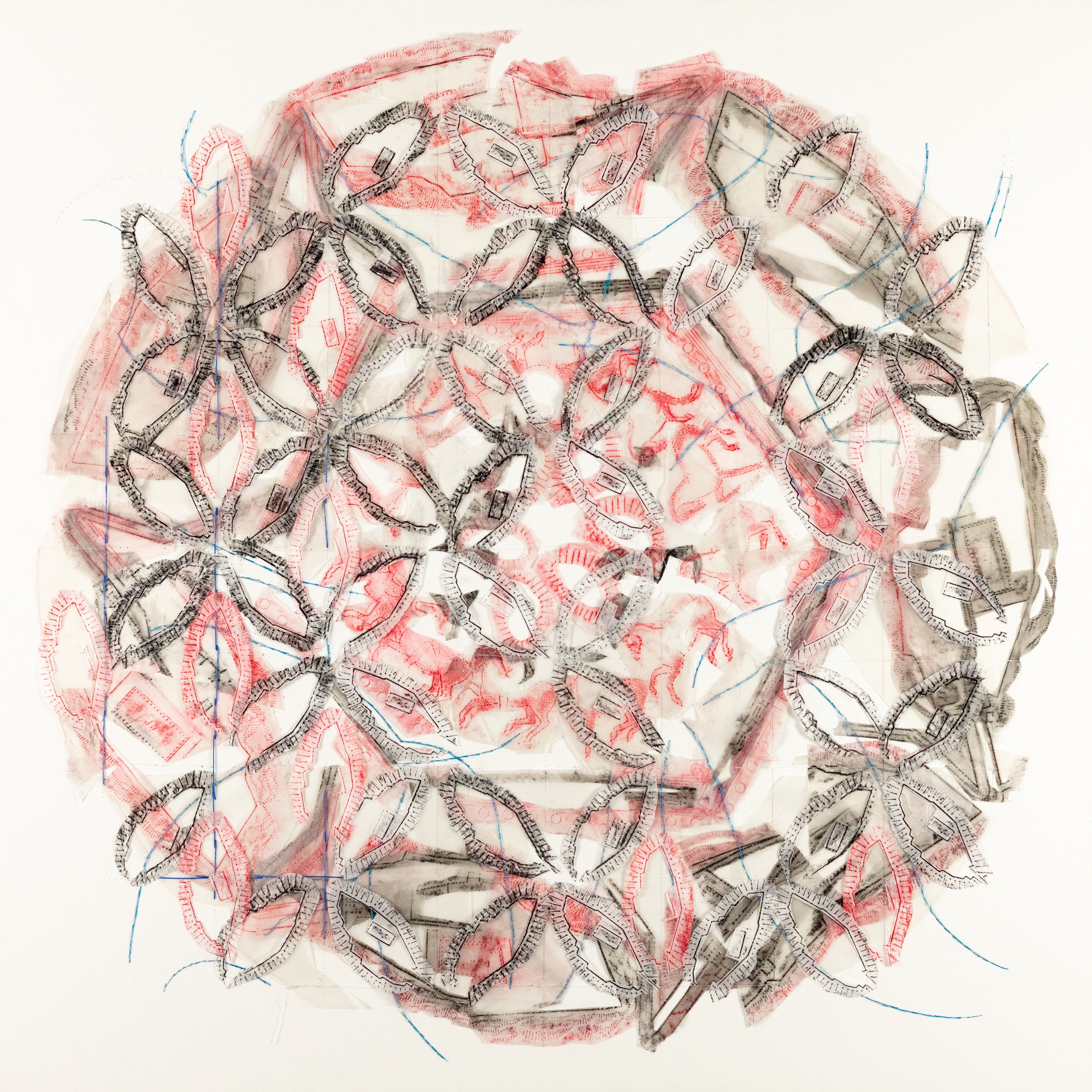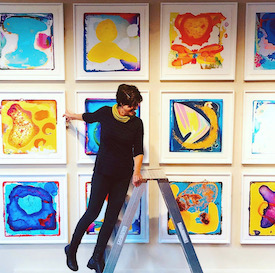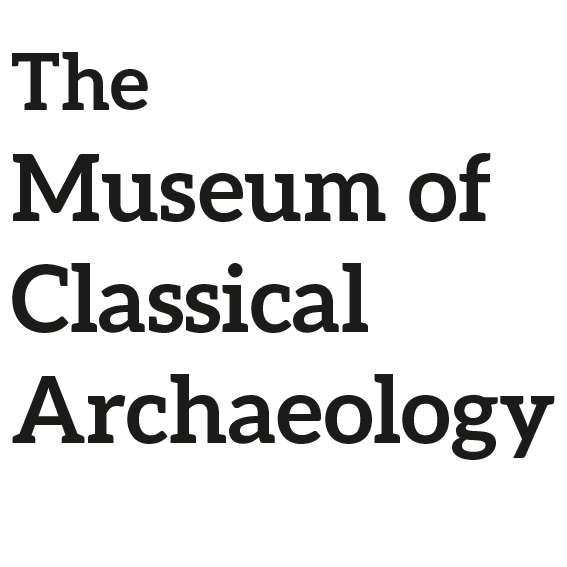
Lines of Site
The Parthenon Frieze
An exhibition of contemporary works by Debbie Loftus
28 January - 28 March 2020
In this exhibition of very contemporary works, artist Debbie Loftus explores the resonance of shattered fragments and fractured lines within the harmonious flowing arabesques of the Parthenon frieze.

Debbie Loftus, Blind Eye View, triptych central panel (Copyright: the artist)
The bleached and broken stones that make up the Parthenon frieze as we see it today are like an immense beautiful jigsaw from which innumerable pieces have been lost. Those absences are poignant because they remind us that we are seeing isolated pieces of a distant, seemingly perfect world that can never be recaptured in its pristine entirety.
But this vision of the shattered stones is a romantic creation.
The colour choices made by ancient artists can seem garish to modern eyes, while the Parthenon itself is a war memorial, paid for with protection money. Over the centuries the magnificent temple and sculptures have suffered immense damage: some of it accidental, but mostly caused deliberately by vandals and warring factions.
The weathered stones that survive are facets of a historical process that stretches back 2,500 years. The stories they tell, recorded in the fractures and absences that inform Lines of Site, resonate richly with contemporary life.
The series was made during a time of chaotic political upheaval, and it explores both historical and contemporary ideas about social order, ideology, power and loss.
Debbie Loftus
For Loftus, the process of making the artworks involved the artistic decision to erase, destroy or replace areas of laboriously worked imagery, then layering the fragments to create new wholes.
Second Sight: Braille, tactile images and the Parthenon Frieze
The works in this show began as a suite of six layered drawings exhibited at the British Museum in 2015, when Debbie Loftus was artist–in–residence for the premiere of a new cantata, Panathenaia by Thomas Hewitt Jones and Paul Williamson. In these works, Loftus engages directly with the bodily senses but also with their absence - hearing and not hearing an absent musical score, but also seeing and not seeing...
In the Braille-inspired triptych, Loftus takes inspiration from the 1998 publication, Second Sight of the Parthenon Frieze, which uses Braille and tactile images to communicate the composition of the frieze for blind and partially sighted users.
Reinterpreting the frieze as a tactile experience, the book proposes a special kind of one-to-one intimacy with the classical sculptures that suggested ways in which Lines of Site could close the gap between the aesthetic of the Parthenon and the modern artwork.
The book Second Sight of the Parthenon Frieze will be available for consultation at the Front Desk for the duration of the exhibition. Visitors are warmly welcomed to borrow it during their visit.
About the Artist
 Artist Debbie Loftus at work (copyright: the artist): Debbie Loftus trained at the Chelsea School of Art and has a background in fine art, design and photography. She works on location and from her studio in London. Recent shows include the British Museum, London; Kings College, Cambridge; Ulriksdal Palace, Stockholm; and Tom Rowland fine art, London. Recent publications include Galileo 24 (2017), Six London Preludes (2017) and Clay: Themes and Variations from Ancient Mesopotamia (2018).
Artist Debbie Loftus at work (copyright: the artist): Debbie Loftus trained at the Chelsea School of Art and has a background in fine art, design and photography. She works on location and from her studio in London. Recent shows include the British Museum, London; Kings College, Cambridge; Ulriksdal Palace, Stockholm; and Tom Rowland fine art, London. Recent publications include Galileo 24 (2017), Six London Preludes (2017) and Clay: Themes and Variations from Ancient Mesopotamia (2018).
Events
Workshop Tuesday 10 March 2020, 2-4pm: Lines of Site: Artist-led workshop
Touch Tour Date and time tbc
Find out more







